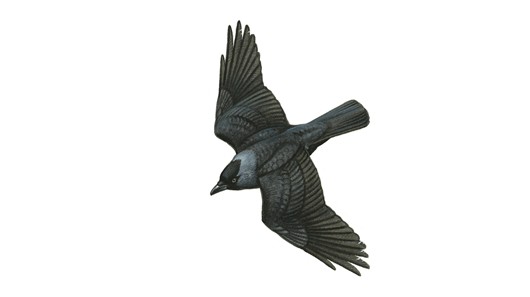Respiratory Health
In 1966, 1971, 1977, 1982, 1989, 1999, 2006-10, and 2014-16, study members were asked the MRC questionnaire on respiratory symptoms (MRCQ).
The MRCQ consists of questions on coughing, phlegm, breathlessness, wheezing and chest illnesses.1)
Details of the questions and variable names resulting from the MRCQ can be seen below.
| 1966 | 1971 | 1977 | 1982 | 1989 | 1999 | 2006-10 | 2014 | |
| Do you usually cough first thing in the morning in winter? | WIC66 | WIC71 | WIC77 | WIC82 | WIC89 | WIC | WIC09 | WIC14x |
| Do you usually cough during the day or night in winter? | WID66 | WID71 | WID77 | WID82 | WID89 | WID | WID09 | WID14x |
| Do you cough like this on most days for as much as 3 months each year? | WIM66 | WIM71 | WIM77 | WIM82 | WIM89 | WIM | WIM09 | WIM14x |
| Do you usually bring up phlegm first thing in th morning in the winter? | PHL66 | PHL71 | PHL82 | PHL89 | PHL | PHL09 | PHL14x | |
| Do you usually bring up phlegm during the day or night in winter? | PHLD66 | PHLD71 | PHLD82 | PHLD89 | PHLD | PHLD09 | PHLD14x | |
| Do you bring up phlegm on most days for as much as 3 months each year? | PHLM66 | PHLM71 | PHLM82 | PHLM89 | PHLM | PHLM09 | PHLM14x | |
| In the past 3 years, have you had a period of cough and phlegm lasting for 3 weeks or more? | COPH66 | COPH71 | COPH82 | COPH89 | COPH | COPH09 | COPH14x | |
| Does your chest ever sound wheezy or whistling? | WZY66 | WZY71 | WZY82 | WZY89 | WZY | WZY09 | WZY14x | |
| Do you get this most days (or nights)? | WZYD66 | WZYD71 | WZYD82 | WZYD89 | WZYD | WZYD09 | WZYD14x | |
| During the past 3 years, have you had any chest illnesses eg bronchitis, pneumonia, which has kept you off work or indoors for a week or more? | BRONC66 | BRONC71 | BRONC77 | BRONC82 | BRONC89 | BRONC | BRONC09 | BRONC14x |
| How many illnesses like this have you had in the last 3 years? | NUM66 | NUM71 | NUM82 | NUM89 | NUM | BRONN09 | BRONN14x | |
| Did you consult a doctor about this during the last 3 years? | BROND | BROND09 | BROND14x |
Lung function was first measured in 1982 using a Mini Wright Peak Flow meter. This was used to measure the peak expiratory flow rate (PEFR) to the nearest 10 litres/min. The PEFR was also measured at 1989 and 1999 using the Micro Medical spirometer.
At ages 43 (1989), 53 (1999) and 60-64 (2006-10) forced expiratory volume in one second (FEV1) and forced vital capacity (FVC) were measured using the Micro Medical spirometer. At age 68-70 (2014-16) forced expiratory volume in one second (FEV1) and forced vital capacity (FVC) was measured using Easy on-PC sensor (spirometer). Three measures were used at 43, 60-64 and 68-70 years and two measures at 53 years. It was also recorded whether the technique for each blow was satisfactory.
Recommended measures of FEV1 and FVC were derived using the American Thoracic Society (ATS) criteria, firstly removing those values where the technique was judged not to be satisfactory then taking the maximum of the two qualifying measures at 53 years and the three qualifying measures at other ages. Impossible values were removed.
Data on pollution were also collected as part of the 60-64 (2006-10) sweep.
Obtaining the standard adult respiratory health variables
- You can obtain a list of the standard topic variables to use in an NSHD data sharing request by selecting the link below.
